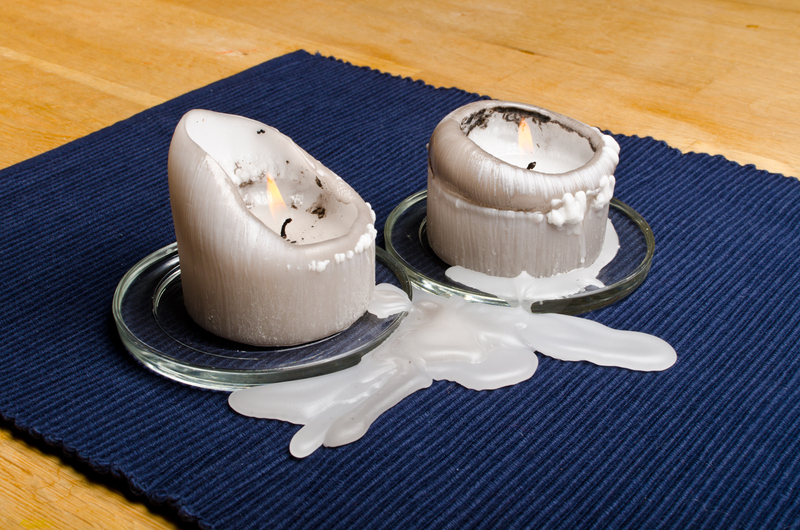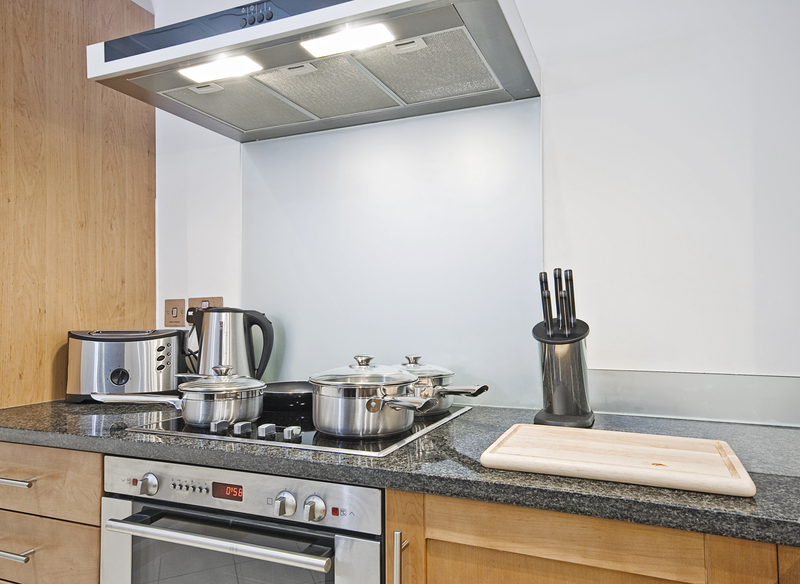Expert Tips on Keeping Your Home Free from Dust and Allergies
Posted on 29/08/2025
Expert Tips on Keeping Your Home Free from Dust and Allergies
Are you tired of constant sneezing, itchy eyes, and relentless dust bunnies in your living space? If so, you're not alone. Allergens and dust are among the top causes of respiratory issues and discomfort in homes worldwide. Keeping your living environment clean and allergen-free doesn't have to be a daunting task. This comprehensive guide will provide expert tips on keeping your home free from dust and allergies, supporting your journey to a healthier, happier residence.
Understanding the Impact of Dust and Allergens in the Home
Before diving into practical advice, it's crucial to grasp why dust and allergens pose significant risks in your household. Dust particles are a complex mixture of dead skin cells, textile fibers, mold spores, pollen, pet dander, and even microscopic insects called dust mites. Allergens, on the other hand, refer to substances that can trigger allergic reactions, often found within household dust.
- Dust mites thrive in warm, humid environments such as bedding and upholstery.
- Pollen can easily enter homes through open windows and clothes.
- Mold spores flourish in damp spaces, contributing to respiratory issues.
- Pet dander contains proteins that are notorious allergens for sensitive individuals.
The Health Risks Involved
Repeated exposure to domestic dust and allergens may lead to or worsen existing health problems, such as:
- Asthma
- Allergic rhinitis
- Sinus infections
- Skin rashes
- Chronic sneezing and coughing

Comprehensive Cleaning Routines for Minimizing Dust and Allergens
1. Establish a Consistent Cleaning Schedule
A meticulously maintained home is your first line of defense against dust accumulation. Create a weekly cleaning plan targeting high-traffic areas and dust-prone zones like bedrooms, living rooms, and entryways. Use a combination of vacuuming, dusting, and mopping to achieve the most effective results.
- Vacuum carpets and rugs at least twice a week - more frequently if you have pets or allergies.
- Wipe surfaces with a damp microfiber cloth, as dry dusters can release particles into the air.
- Don't forget often-overlooked places such as window sills, ceiling fans, and baseboards.
2. Invest in a High-Quality Air Purifier
Consider purchasing an air purifier with a HEPA filter--these devices can capture up to 99.97% of airborne particles, including dust, pollen, and pet dander. Place the purifier in rooms where you spend the most time, like your bedroom or living area. Not only does this significantly reduce allergens, but it also improves overall indoor air quality.
3. Upgrade Your Vacuum Cleaner
Not all vacuum cleaners are created equal when it comes to dust and allergy control. Choose a vacuum with a built-in HEPA filter and adequate suction power to trap even the tiniest dust particles. Bagless models are easy to empty and maintain, but make sure to do so outside or in a well-ventilated area to avoid inadvertently releasing dust back into your home.
- Vacuum under beds, sofas, and other furniture regularly.
- Use vacuum attachments to clean curtains, upholstery, and mattresses.
- Routinely clean and replace your vacuum's HEPA filter as directed by the manufacturer.
Eliminating Dust Mites and Other Common Allergens
4. Wash Bedding and Soft Furnishings Frequently
Bedding is a primary habitat for dust mites and can quickly become a hotspot for allergens. Wash sheets, pillowcases, blankets, and duvet covers weekly, using hot water (at least 130?F) to kill dust mites. Consider using machine-washable throws and cushion covers that are easy to clean.
- Encasing mattresses and pillows with allergen-proof covers provides an extra barrier against dust mites.
- Launder curtains, drapes, and fabric blinds at least once a month.
5. Declutter Your Space
A cluttered room offers more surfaces for dust to settle. Keep your home tidy by reducing unnecessary knick-knacks, piles of magazines, and other dust-collecting objects. Store items in closed cabinets or bins to keep as much dust as possible contained and away from the air you breathe.
6. Manage Pet Dander
If you're a pet owner, you'll know that pet dander is a persistent allergen. While you shouldn't have to choose between your furry companion and a dust-free home, maintenance is key.
- Brush and bathe pets routinely to minimize shedding.
- Keep pets off beds and upholstered furniture.
- Designate pet-free zones--especially bedrooms--to limit dander spread.
- Vacuum and mop pet areas at least two times per week.
Optimize Your Home's Ventilation for Allergy Relief
7. Control Indoor Humidity Levels
Many allergens, especially dust mites and mold, thrive in humid environments. Aim to maintain your home's humidity between 30% and 50%. Use a dehumidifier in damp rooms such as basements, and ensure bathrooms and kitchens are well ventilated with exhaust fans or open windows during and after use.
8. Change HVAC Filters Regularly
Your home's heating, ventilation, and air conditioning (HVAC) system is a pivotal ally in reducing airborne allergens. Replace or clean your HVAC filters every 1-3 months, and opt for filters with a high Minimum Efficiency Reporting Value (MERV) rating for optimal filtration performance.
- Consider scheduling professional HVAC maintenance every year to ensure peak efficiency.
- Install additional room filters if allergies are severe or persistent.
9. Keep Windows and Doors Closed During Allergy Season
During peak pollen times, such as spring and early summer, keep windows and doors closed to prevent outdoor pollen and dust from entering your home. Install weatherstripping and door sweeps to further minimize infiltration.
Advanced Strategies for an Allergy-Proof Home
10. Choose Easy-to-Clean Flooring and Furnishings
Carpets, although cozy, are notorious havens for dust mites, pet hair, and pollen. If possible, opt for hard flooring surfaces such as hardwood, tile, or laminate, which are far simpler to clean and maintain.
- Use washable area rugs that can be laundered regularly.
- Minimize soft furnishings and plush decor that trap dust and dander.
11. Use Hypoallergenic Paints and Materials
New paints, finishes, and building materials may off-gas volatile organic compounds (VOCs) that can irritate those with allergies or sensitivities. Select hypoallergenic, low-VOC, or zero-VOC products for interior painting and decor projects to maintain clean air quality.
12. Regularly Inspect for Mold and Mildew
Even small leaks can foster mold growth, which increases indoor allergy symptoms. Check under sinks, behind appliances, and around windows for signs of moisture or mold. Treat any problem areas immediately, and use mold-inhibiting sprays if necessary.
13. Green Cleaning Solutions
Many traditional cleaning products contain harsh chemicals that can worsen allergies. Try making your own natural cleaning solutions with ingredients like vinegar, baking soda, and lemon. Not only are these safer for your family, but they're also environmentally friendly.

Frequently Asked Questions: Home Dust & Allergy Prevention
How often should I deep clean for allergies?
Ideally, deep cleaning--including washing bedding, vacuuming upholstery, and decluttering--should be done at least once every two weeks. Adjust the frequency based on the severity of your allergies and the presence of pets.
Are scented candles and air fresheners safe for allergy sufferers?
Many scented products contain chemicals that can aggravate respiratory issues. Opt for unscented or naturally scented alternatives like beeswax candles, or use essential oil diffusers with caution. Always ensure proper ventilation.
What is the best way to control dust in multi-story homes?
Start cleaning from the top floor and work your way down. Use allergen-proof covers for mattresses on each level and maintain consistent cleaning routines in all rooms, especially staircases and hallways.
Conclusion: A Healthier, Allergy-Free Home Is Within Reach
Keeping your home free from dust and allergies is a continuous yet highly rewarding effort. By implementing these expert strategies--ranging from consistent cleaning routines to advanced measures like air purification and material upgrades--you can greatly reduce allergens and enjoy a safer, healthier living environment.
Remember to customize these tips based on your family's specific needs and the unique characteristics of your home. With a proactive approach and diligent maintenance, you'll be well on your way to a comfortable, allergy-proof living space. Say goodbye to sneezing fits and dust clouds--and hello to clear, fresh air!
Do you have additional tips on managing allergies at home? Share your advice in the comments below, and help others on their journey to a cleaner, healthier home!




